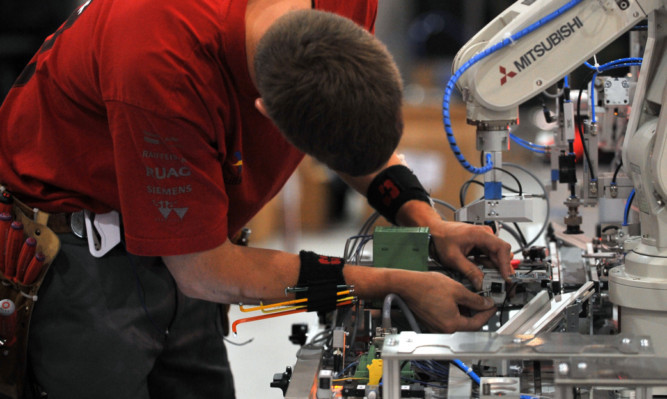Britain’s beleaguered manufacturing sector may finally be emerging from its recession after recording its best performance in 14 months, figures suggested today.
There was also a return to job creation in May for the first time in four months as the upturn – a second monthly rise in output for the sector – stoked hopes for a sustained recovery.
A headline reading of 51.3 for May in the the latest Markit/CIPS purchasing managers’ index was above the 50 level which separates growth from contraction. April’s figure was revised up from 49.8 to 50.2. The index had plunged to a low of 47.9 in February, inching up to 48.3 in March.
It is the latest encouraging sign for the UK economy after it grew 0.3% in the first quarter of 2013, avoiding a triple-dip recession.
The Bank of England has since upgraded growth prospects and there has also been optimism from business groups. However the Organisation for Economic Cooperation and Development marked down its UK forecast last week.
Improvements in headline gross domestic product (GDP) have been undercut by the fact that sectors including manufacturing have continued to struggle at well below their pre-recession peak, and acted as a drag on the headline figure.
But today’s data indicate that it may at last be entering a sustained period of recovery and produce a positive second quarter when the next tranche of official data is published next month.
They showed the growth of both production and new orders accelerating. While the domestic market was the main driver, export business also saw a modest increase, including higher demand from North America, East Asia, Russia, Germany and France.
Manufacturing was strongest among consumer goods producers, but other areas of the sectors also saw improvements.
Rob Dobson, senior economist at survey compilers Markit, said: “The UK manufacturing sector had a spring in its step in May, as a brightening domestic market led to faster growth of output and new orders.
“One of the more positive features of the expansion is its broad base, with producers of consumer, intermediate and investment goods all reporting stronger output growth.
“The tentative return to job creation in the sector in May also suggests that manufacturers are becoming more confident in the outlook.”
Mr Dobson suggested the improvement added weight to the Bank of England’s stance not to extend its quantitative easing programme further for the time being as it adopted a wait-and-see policy to find out whether it was working.
David Noble, chief executive at the Chartered Institute of Purchasing and Supply, said: “Optimism abounds in the manufacturing sector as continued growth, improving economic conditions, new orders and job creation all contribute to a 14-month high for the PMI in May.
“The industry, battered and bruised in the last 18 months, is still building from a low base and as ever, there’s more work to do, but this is a solid foundation which bodes well for the future.”
Lee Hopley, chief economist at manufacturers’ organisation EEF, said: “May’s rebound in manufacturing activity signals the strong likelihood of a positive second quarter for the sector.
“Broad based improvements across industry supported by rising order inflows, even from parts of Europe where the pace of contraction is now starting to ease, provide some reasons for cautious optimism that manufacturing growth is turning a corner.”
Samuel Tombs of Capital Economics said the data provided “a tentative indication that the industrial sector’s recession might be drawing to a close”.
